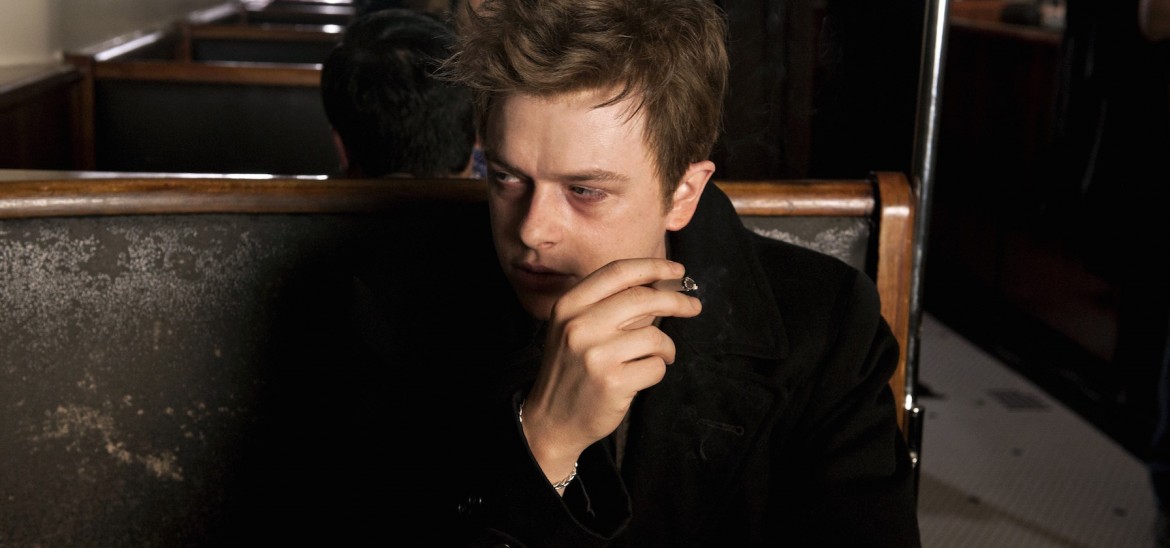Into Film Clubs
Find out everything you need to know about starting an Into Film Club.



Life tells the true story of the friendship between Dennis Stock (Robert Pattinson), a photographer for LIFE magazine, and actor James Dean (Dane DeHaan). With Dean on the brink of stardom in 1955, the photographs Stock produced of him became some of the most iconic images of the age. As well as being a fascinating snapshot of the era and the man, the film also evokes today's celebrity obsessed and image saturated culture.
James Dean and Hollywood's Golden Age
Despite only making three films before his death at the age of just 24, James Dean is one of the most significant movie stars to ever have graced the silver screen. His best-known role, as Jim Stark in Rebel Without A Cause, is a defining representation of teenage alienation in popular culture. Tragically killed in a car crash shortly after the release of his first film, East of Eden, Dean never lived to see Rebel Without A Cause released, though his third film Giant did earn him a posthumous Oscar nomination. Despite his short life, James Dean nevertheless went on to help usher in a new kind of movie star, and became a spokesman for countless alienated teenagers for generations to come.
In the early days of Hollywood, major stars were contracted to particular studios, like Warner Bros or Paramount. Studios kept tight controls on their star's image; presenting them as refined and glamorous, while often creating manufactured romantic relationships for them with other stars for the media. Although the star system is long gone in Hollywood, it's still possible to see similar behaviour in areas of today's popular culture.
In the 1950s, for a new generation of actors like Dean, Marlon Brando and Montgomery Clift, such control was at odds with their more rebellious personality, creating tensions between themselves and their studios. We see this depicted in Life, through the relationship between Dean and Jack Warner, even though they perhaps needed each other more than they'd like to admit. After World War Two, audiences were becoming younger and more resistant to the matinee idols they had previously been presented with, favouring somebody more relatable to them, or with a more mysterious demeanour, just like James Dean.
James Dean and the counter-culture
When James Dean emerged, the term 'teenager' was a relatively new one, but youth culture was about to explode, ringing profound changes in attitudes towards music, style, conformity and sexuality. In Life, we see Dean visit a group of students from his old high school. Those young students would have seen Dean in Rebel Without A Cause, and gone on to help give rise to the enormous social changes that occurred in the 1960s counter-culture movement, the effects of which are still felt today. Dean himself has influenced numerous teen idols since his death, not least actors such as River Phoenix, Leonardo DiCaprio and the two stars of Life.
LIFE and photography
LIFE was an American news and lifestyle magazine that ran for many years, and can count Stanley Kubrick amount its early employees. James Dean was initially reluctant to take part in a LIFE photo-shoot with Dennis, but the frustrations Dennis had with Dean ultimately turned into a positive. The photos that emerged, whether on the streets of New York, in a local barbers, or at Dean's childhood home in Indiana, were natural and evocative, capturing the subject's personality more vividly than a studio shoot ever could. The images continue to appear on posters around the world to this day.
Life director Anton Corbijn also began his career in photography, producing influential work for U2, Nirvana and Nick Cave, before moving into music videos and feature films. With his intimate knowledge of the creative relationship between photographers and their subjects, Corbijn was an ideal director for Life. Anton also has first-hand experience of how images can define the iconography of an artist, having previously explored the life of Joy Division's Ian Curtis in biopic Control.
Lessons from history
Setting any film in a historical period requires great attention to detail. Although Life was shot on digital cameras for financial reasons, the filmmakers were keen to pay homage to the role of 35mm photography for people like Dennis. They therefore used old camera lenses from 1955 to capture the desired style, as well as referencing lots of old photographs from the time. Production designers visited Dean's hometown in Indiana and local museums to authentically present his childhood surroundings, as well as his apartment in New York, which was carefully recreated.
This meticulousness extended to the actors preparation for their roles. Dane DeHaan gained 25lbs in order to accurately reflect Dean's physique and worked very closely with hair, makeup and costume departments to capture the essence of Dean as much as possible. This was not only to provide authenticity for the audience, but also so that DeHaan could immerse himself in the character, creating a more rounded, complex performance.
Biopics can sometimes be a daunting task for a filmmaker, as they try and articulate the life story of a famous figure in just three acts. Life focuses specifically on a pivotal two weeks for James Dean, and in doing so achieves what the best biopics should: capturing the human being and the historical context behind a mythology, whilst simultaneously introducing them to new audiences.
Steven Spielberg used a similar technique in Lincoln, as did Ava DuVernay in Martin Luther King Jr. drama Selma. They highlight resonances with the modern world, showing how history continues to influence and comment on contemporary society.
In the case of Life, we see not only how much of a giant James Dean was in popular culture, but also how celebrity has changed and its evolving relationship with photography in today's era of smart-phones, social media and instant fame.

Get in touch with your article ideas for the News and Views section.